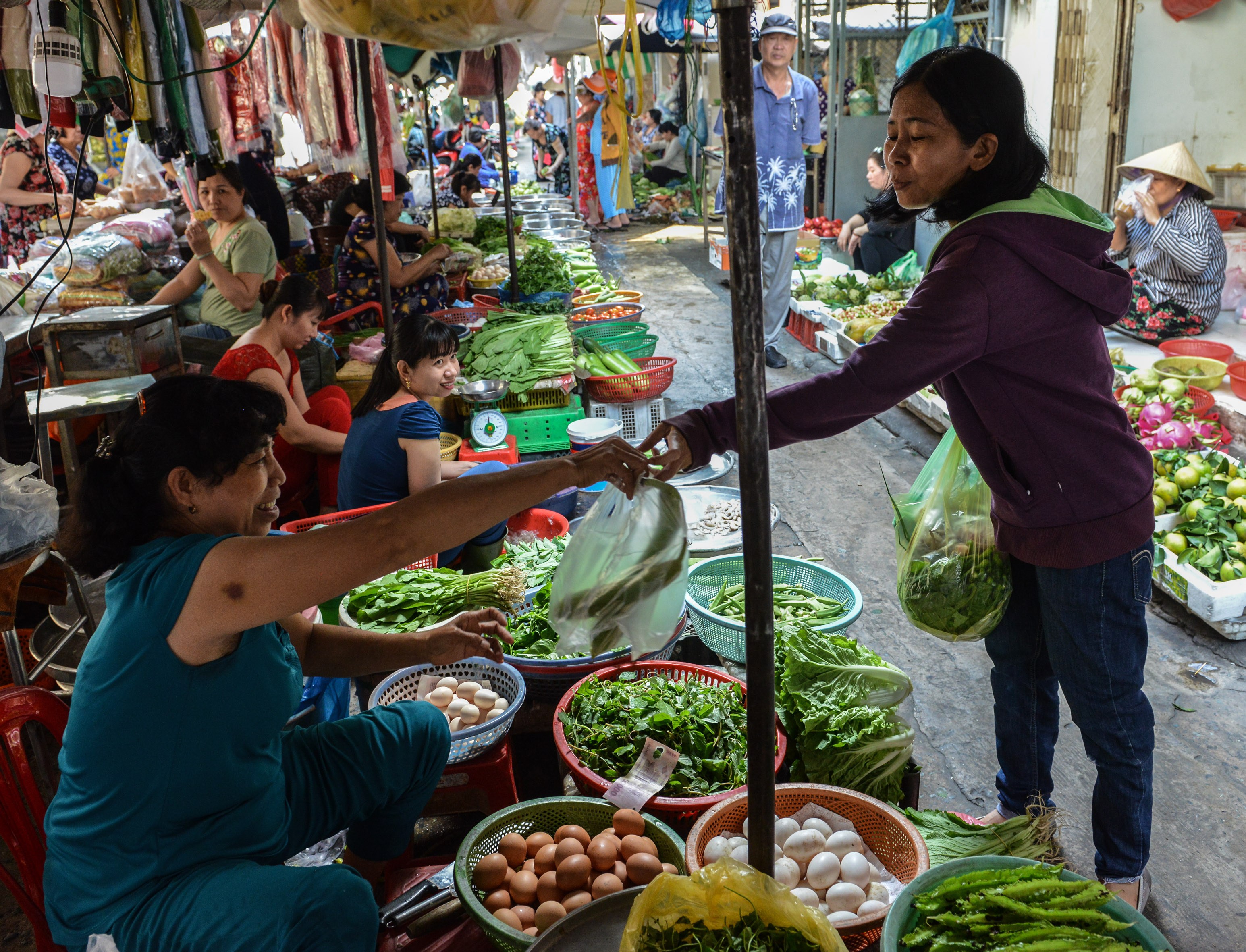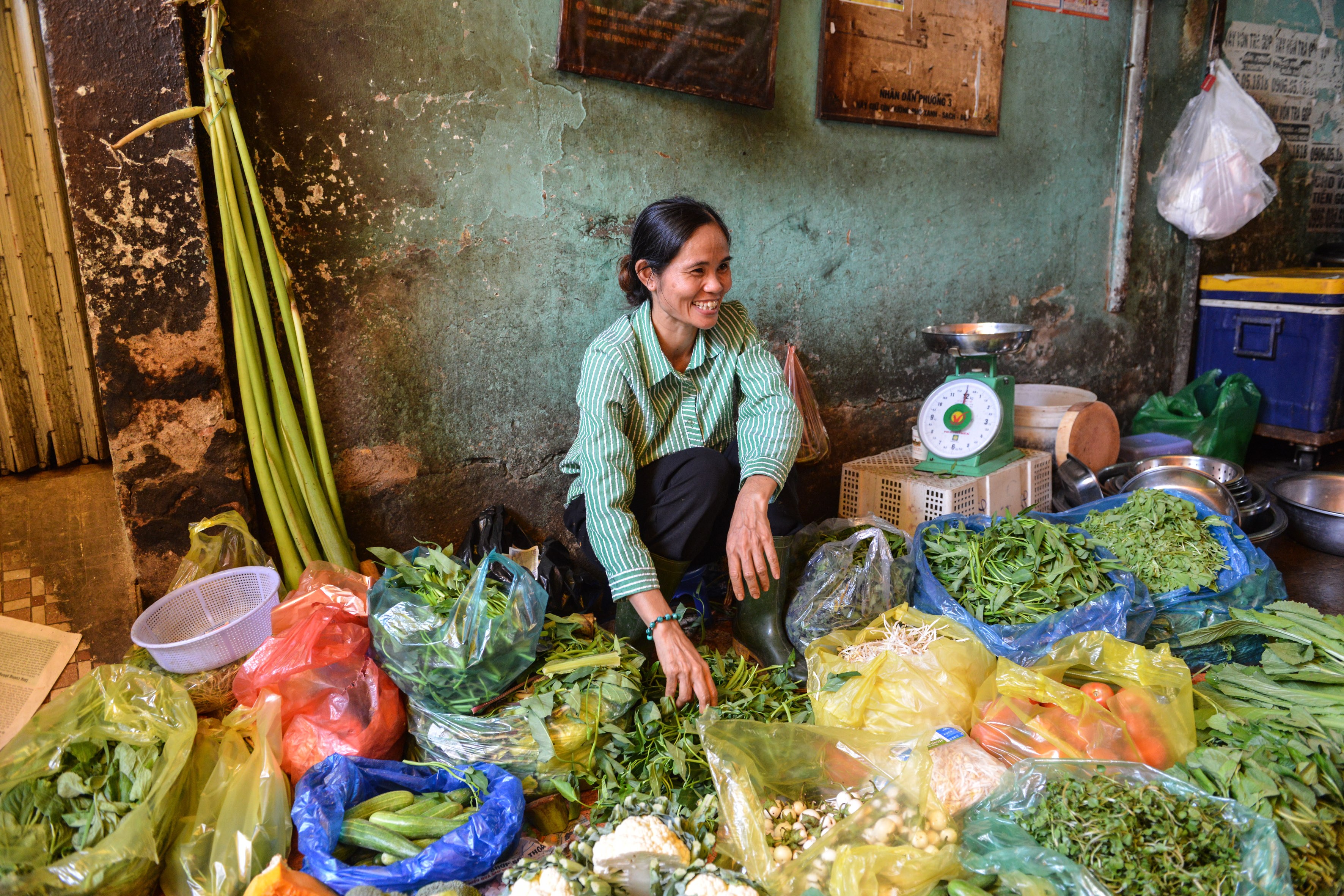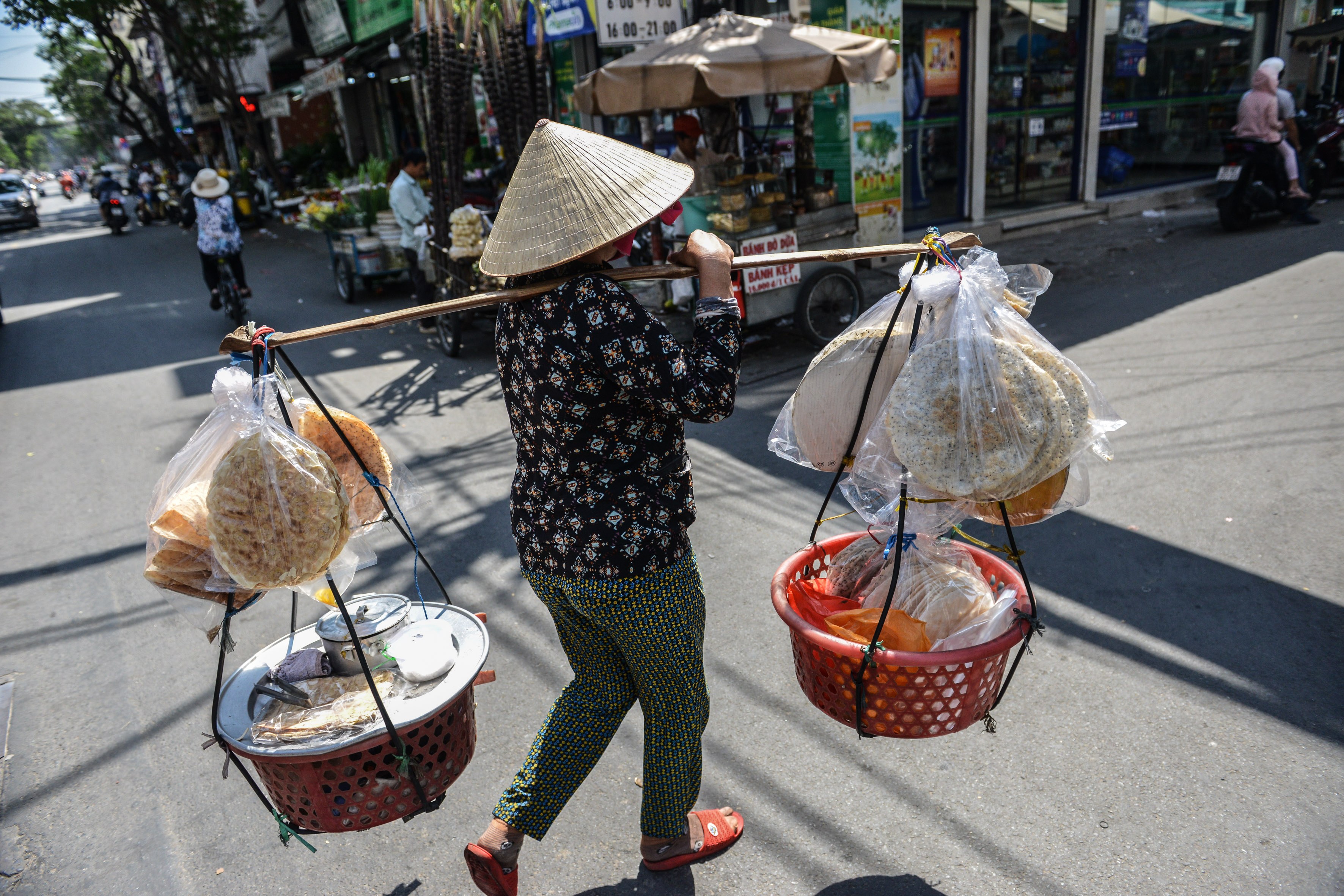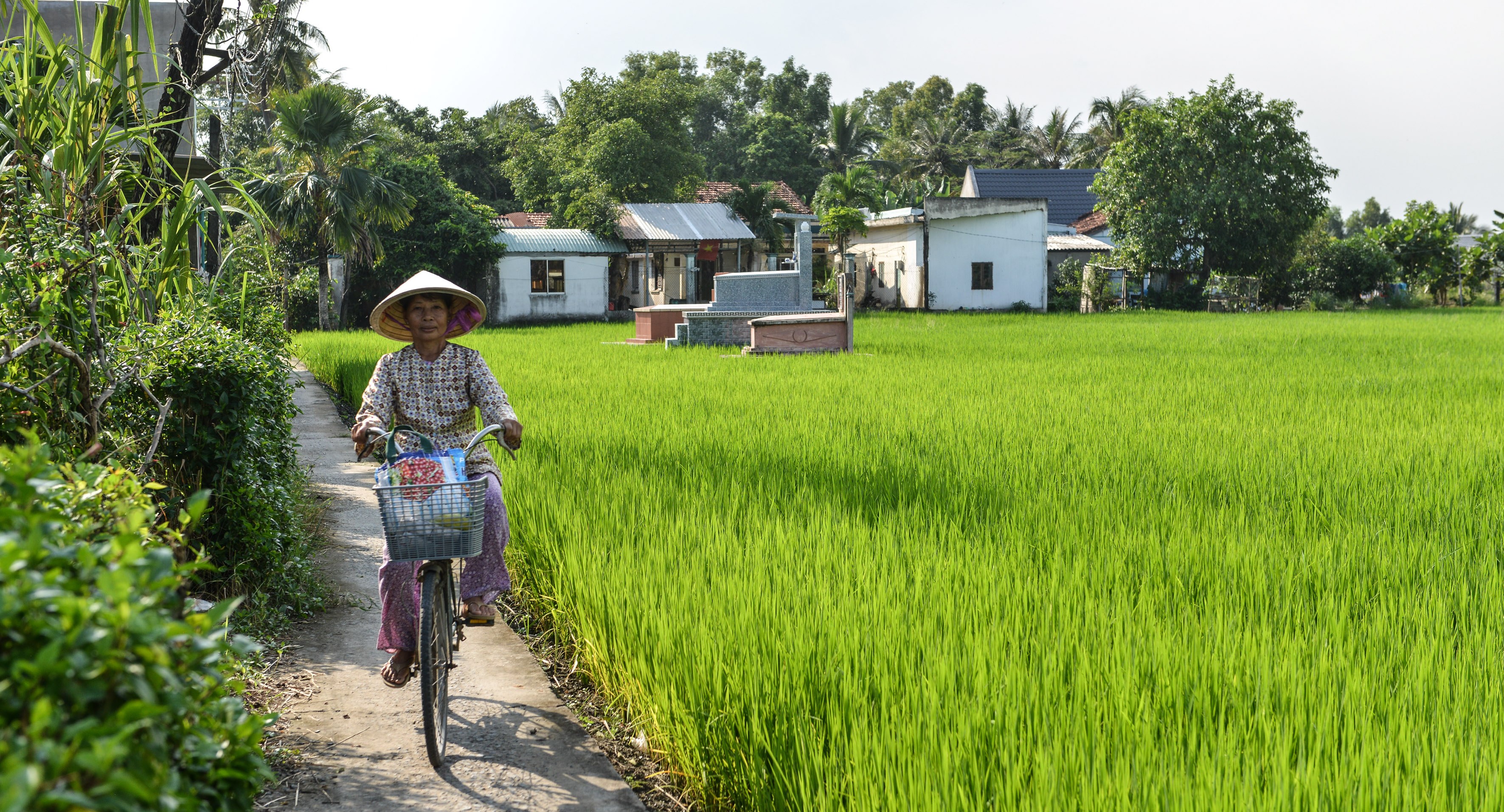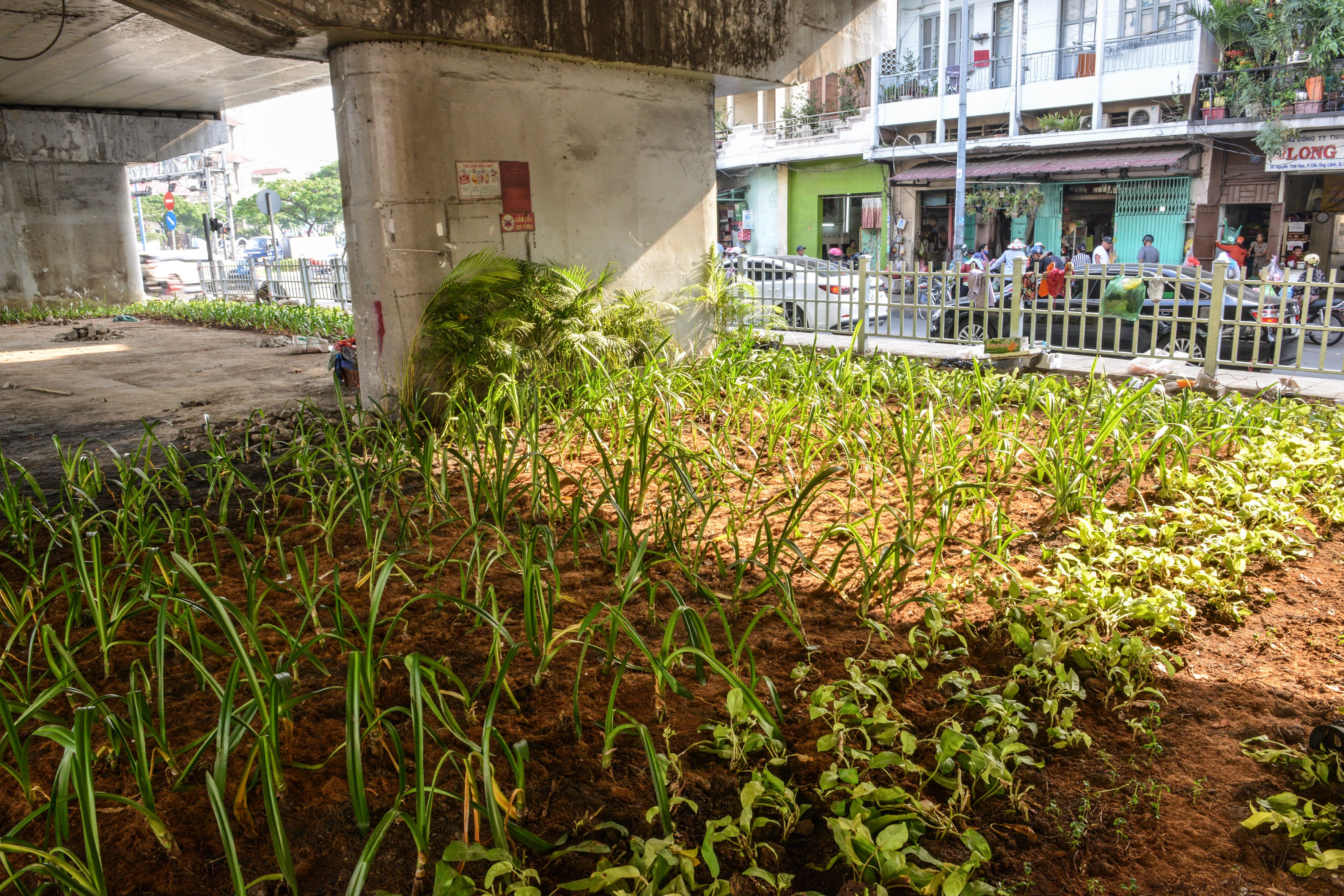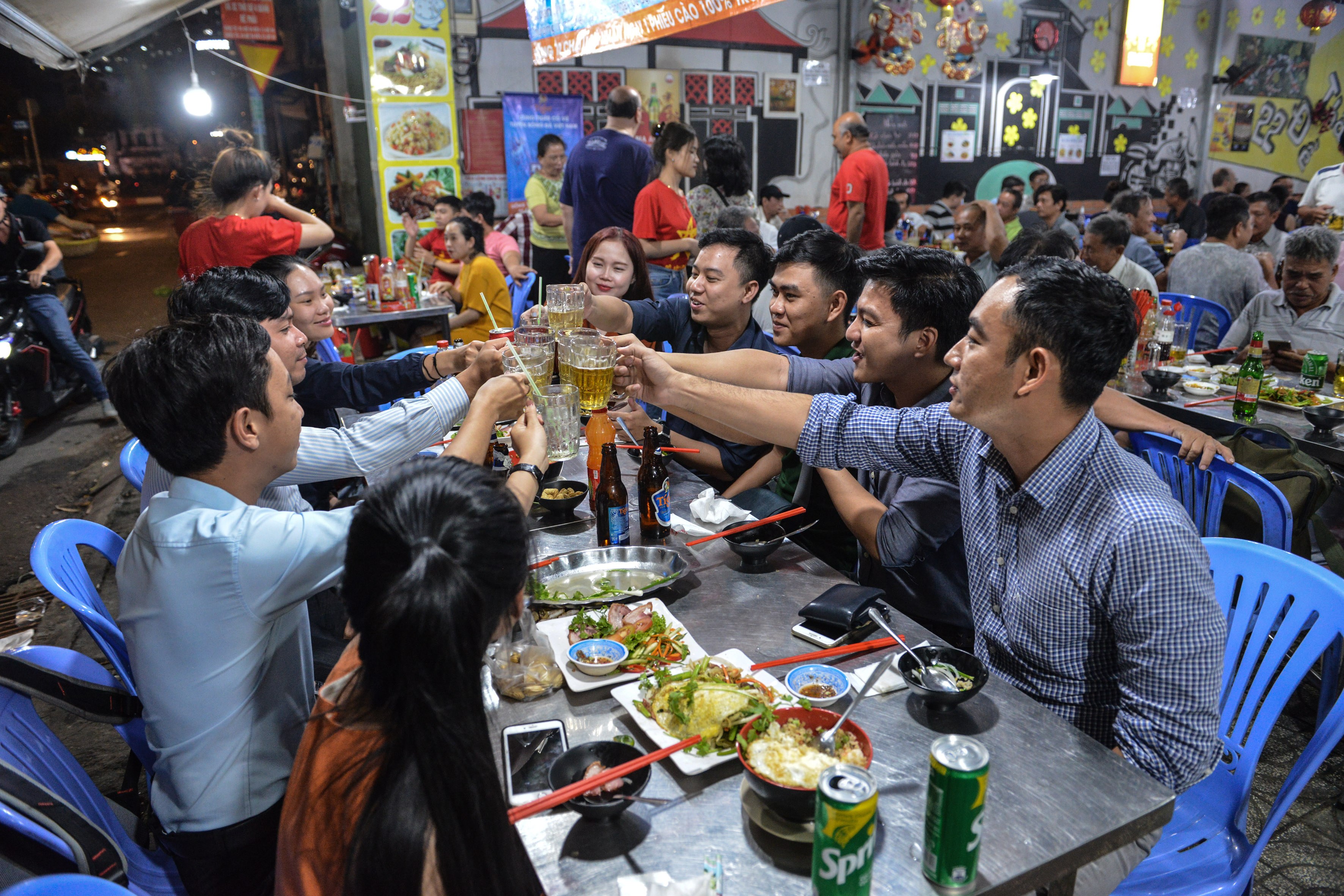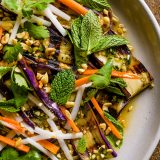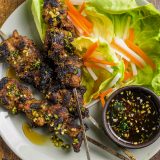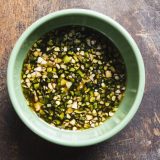A swirl of chaos, contrasts and cooking. It’s perhaps the best way to describe Ho Chi Minh City, a sprawling cityscape of some 9 million people and more than 2 million scooters. A combination that delivers a looped soundtrack of a whirring-whining motoring buzz and an enveloping, seductive aroma of meats doused in fish sauce and sugar sizzling sweetly.
Which is to say, wandering the streets of the city once known as Saigon is equal parts intoxicating and overwhelming. Sleekly modern skyscrapers abut derelict, unfinished squat frameworks that in turn abut teeming street markets where impossibly ripe produce—lemon grass, mint, sour green limes and purple dragon fruit—spill onto the path in front of you.
It’s a city where amidst throngs of traffic, vegetable gardens grow inexplicably in patches of dirt scraped under highway overpasses. Where men sit on street corners mending used sneakers for resale and women fry tender-crispy crepe-like egg cups filled with shrimp and scallions. And everywhere in between, there is grilling, evidence of a visceral love of cooking over open flame.
There are whole birds skewered head to tail and rotated until bronzed over troughs of coals. Ground pork molded around stalks of lemon grass to be held over flames. And bánh tráng nướng, a Vietnamese “pizza” fashioned from crispy rice paper folded over ground meat, herbs, onions and a cracked egg to be tossed over coals alongside chicken feet.
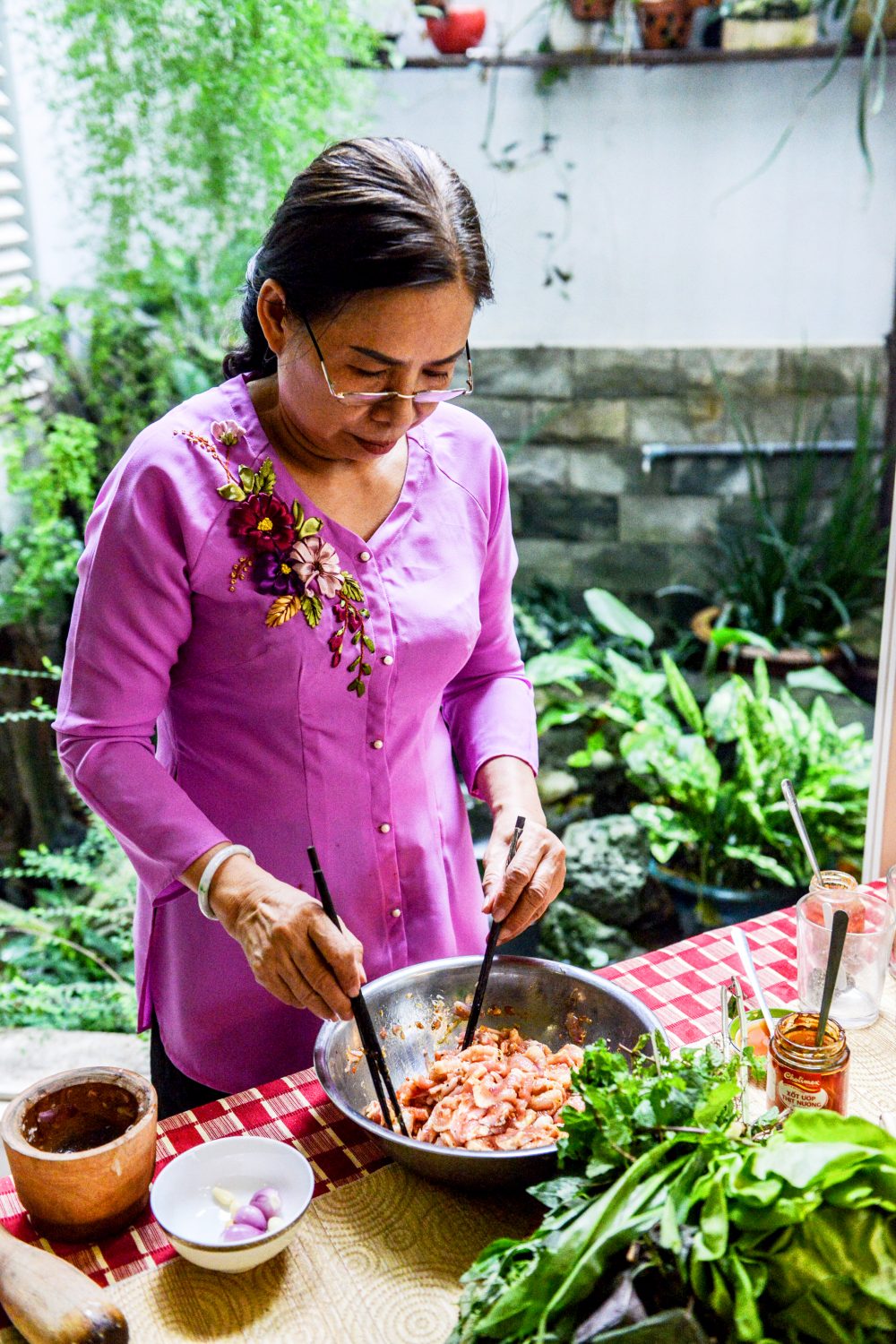
Nguyên Thį Thúy balances rich grilled pork with crunchy, bright pickles.
This isn’t the fussy grilling of backyard American barbecue. It’s the simple and timeless marriage of flame and food. And in Vietnam, it happens on the street. Every street. It’s how I meet Vo Thi Dao, whose nameless 10-year-old open-air lunch shop is—appropriately enough—known only by its address, 75 Đường Huỳnh Thúc Kháng.
When I see her, Vo Thi is on the sidewalk in front of the white tiled alcove that is her eatery, which she opened after moving to follow her adult children to the city from central Vietnam. Her “kitchen” is a metal stool. On it, a large stainless steel kitchen bowl filled with coals and topped with a metal grate. Slender eggplants char and wrinkle as she turns them with tongs.
When the eggplants soften, withering into themselves almost to the point of collapse, Vo Thi strips away their skins, heaping the smoky, tender flesh into a bowl and mash- ing it lightly with a fork and chop- sticks. She adds a drizzle of pork fat, a scattering of sliced scallions and a drench of nước chấm—a dressing made from fish sauce, lime juice, sugar, garlic and chilies.
Served over rice, it is toasted and smoky with pops of sweet spice and garlic, the scallions keeping the flavors fresh. It’s a dish, called cà tím nướng mõ hành, that I would enjoy repeatedly during a week of eating my way across this boisterous city. Sometimes as skin-on halves heaped with sweet-savory ground pork, crispy fried shallots and peanuts. Sometimes peeled and mounded with greens and soft-cooked eggs.
In each case, the dish was similar to Ho Chi Minh City itself—a delicious chaos of contrasting flavors and textures, highs and lows of sweet and savory and spicy, crunchy, tender, warm and cool. I realized it wasn’t just the grilling that made the dish. How the eggplant was dressed after it came off the heat was just as important as the smoky char it developed on it.
More From Vo Thi Dao
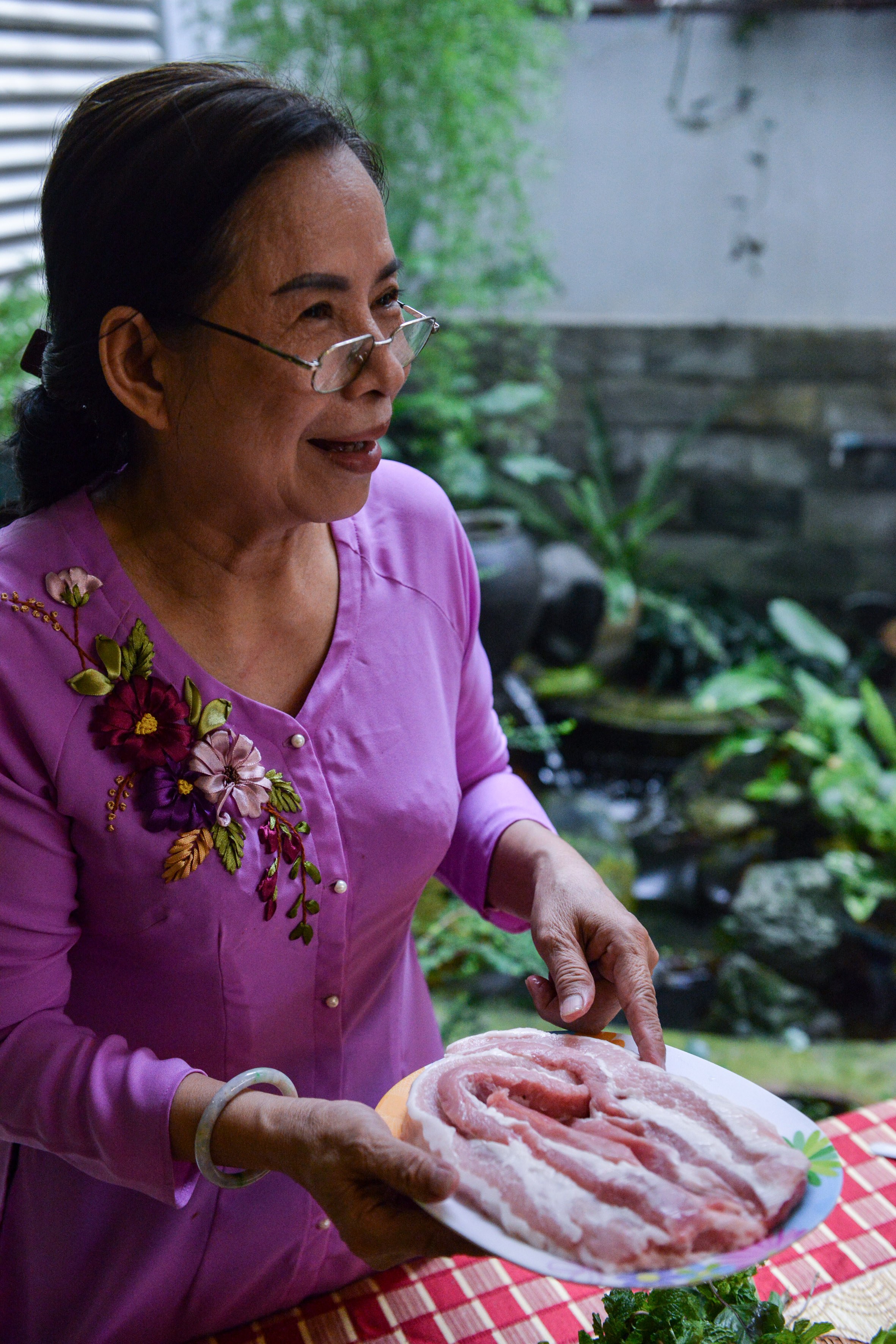
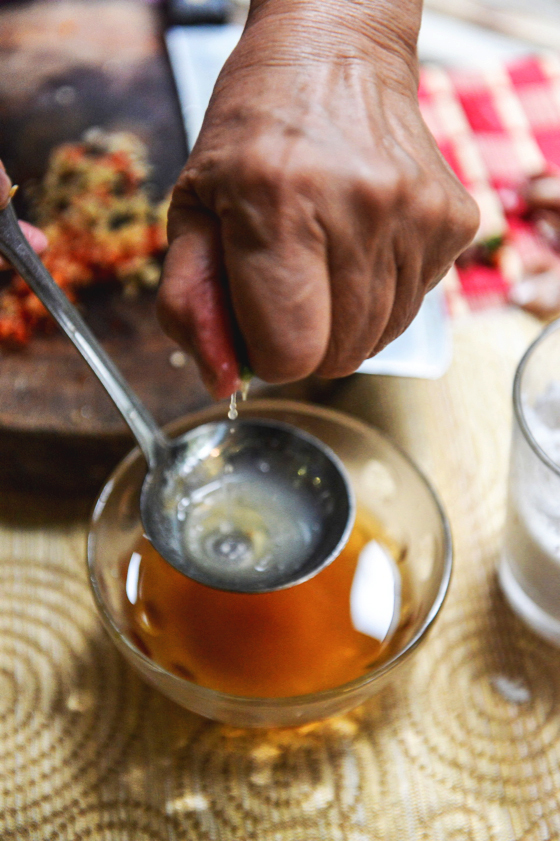
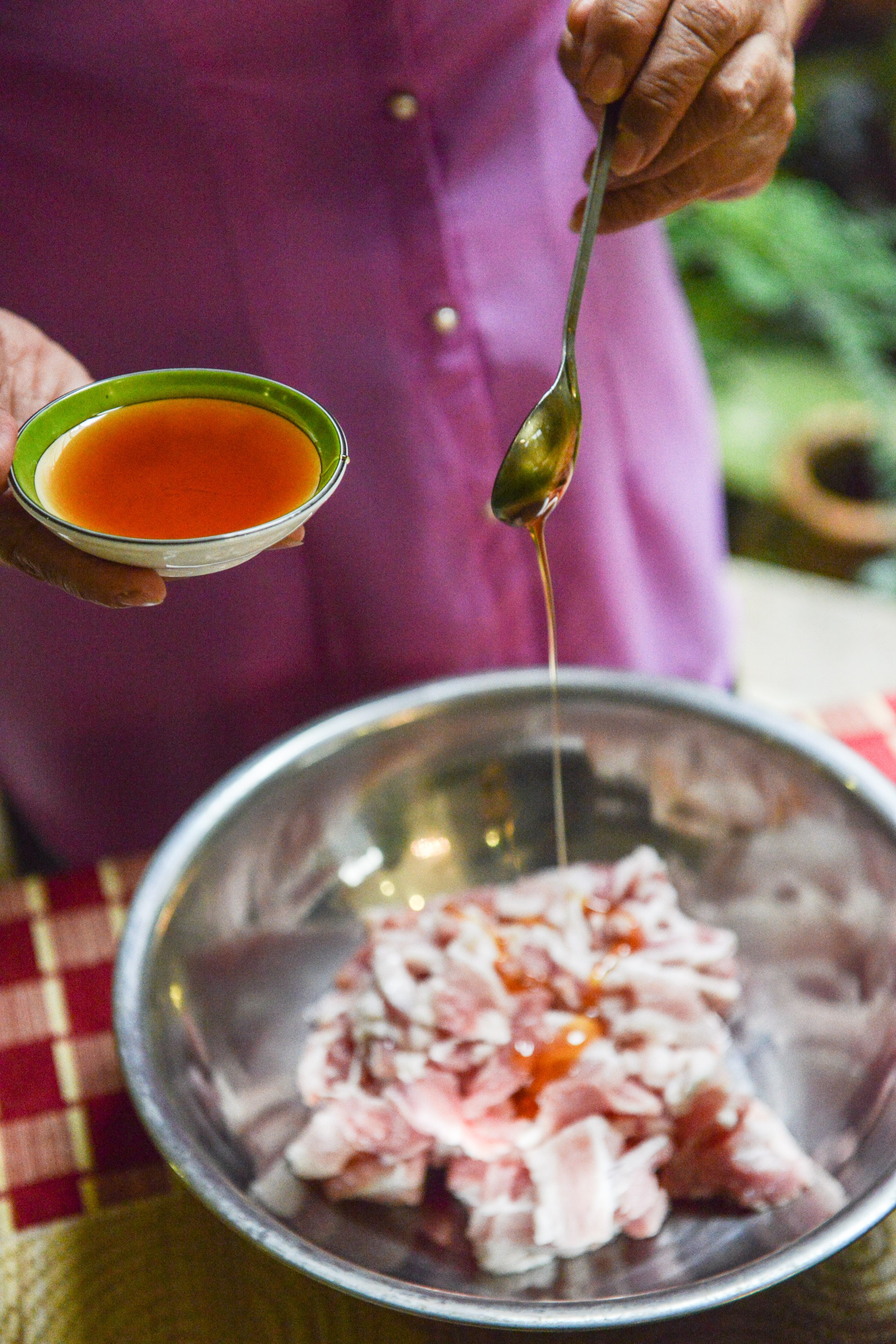
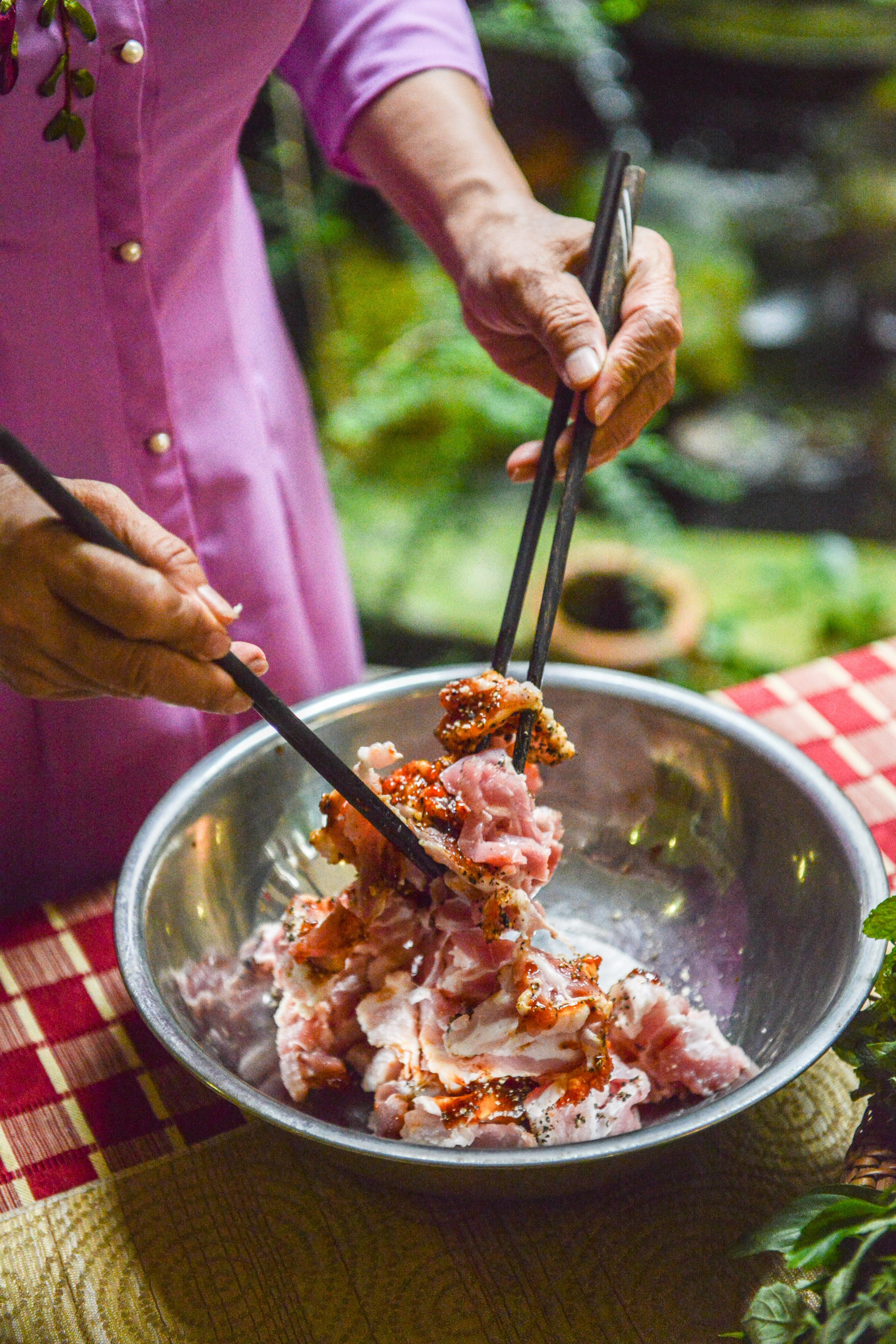
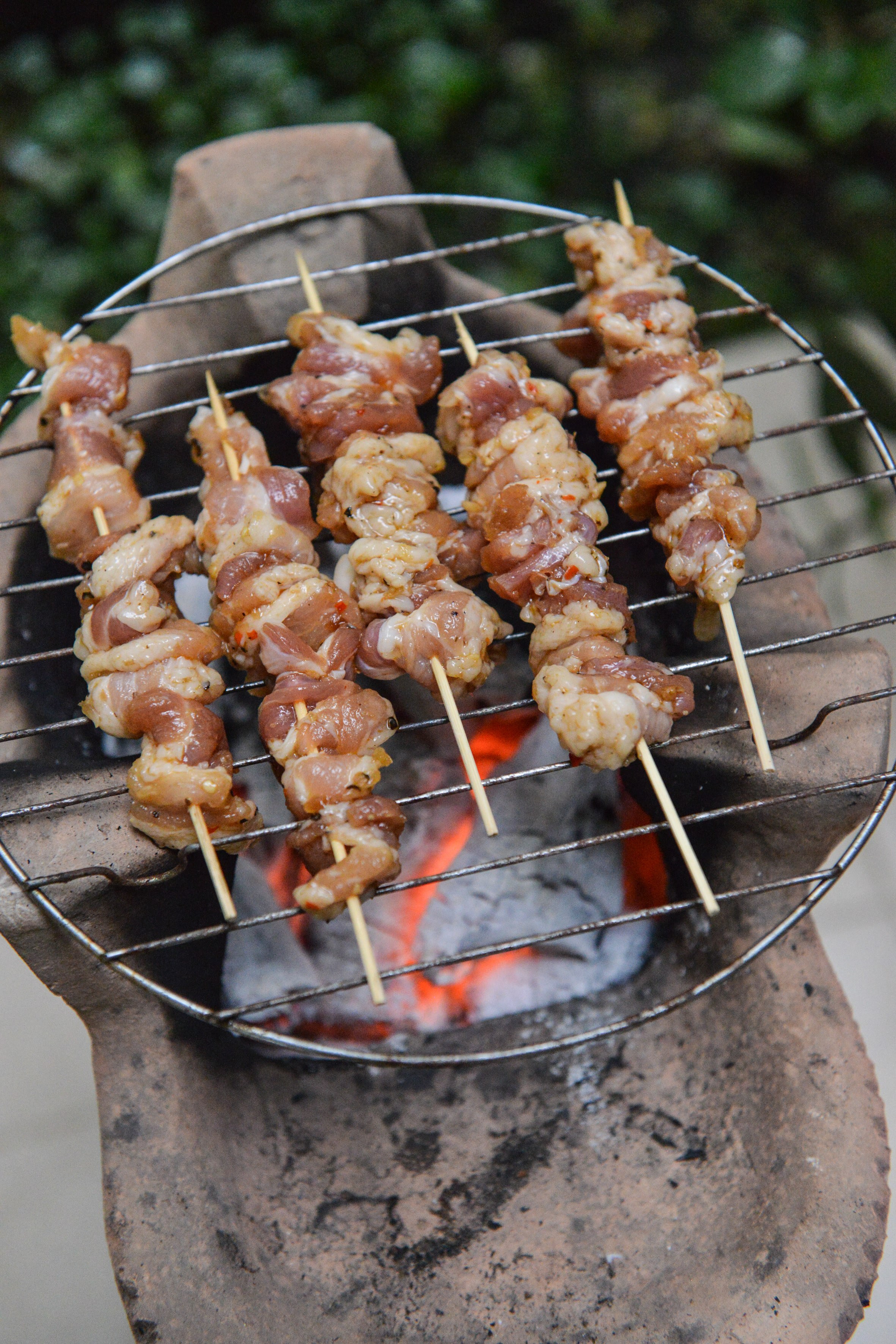
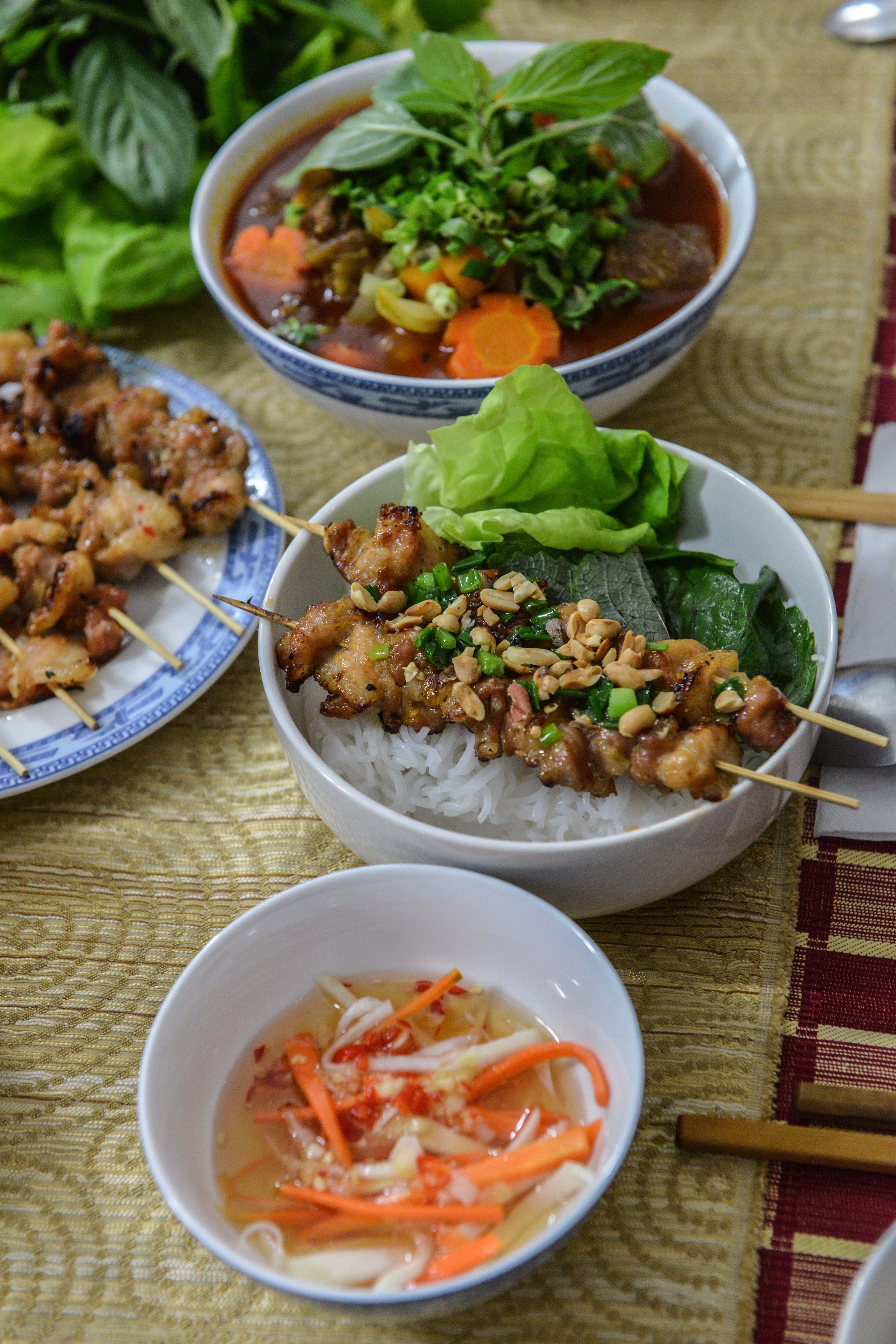
Vietnamese cooking is all about balancing richness and heat with cooling herbs and crunchy vegetables.
And the eggplant was just the start. I was fascinated to see those same f lavors carried across dishes. In Vietnam, grilled meats are not simply grilled meats as we know them. Like the eggplant, they are a canvas colorful on their own, but waiting to be painted with sweet and tangy nước chấm as well as a riot of toppings to add freshness and texture.
It was a lesson driven home by Nguyên Thį Thúy, a literature teacher who invited me into her kitchen. Surrounded by her daughters and grandchildren, she walked me through a half-dozen dishes, each with a similar cluster of tastes and textures. Easily my favorite was bún thịt nướng—grilled pork skewers seasoned with lemon grass and served over thin rice noodles.
Standing at a kitchen table next to a vibrantly overgrown courtyard that merged seamlessly with the kitchen and living room, Nguyên thinly slices a slab of rich pork belly, then uses chopsticks to toss it with an aromatic mash of fish sauce, sugar, onions, shallots, garlic, honey, five-spice powder, chili-garlic sauce and lemon grass.
While it marinates, she tosses chopped carrots and kohlrabi with sugar, salt and rice vinegar for a quick, crunchy pickle. She makes nước chấm, kicking up its potency with extra garlic and red chilies. The children and even my translator pitch in to thread the pork tightly onto bamboo skewers, then Nguyên’s husband carries them to the courtyard, where he sets them onto an urn-like stone grill filled with red coals that fill the air with warm savoriness.
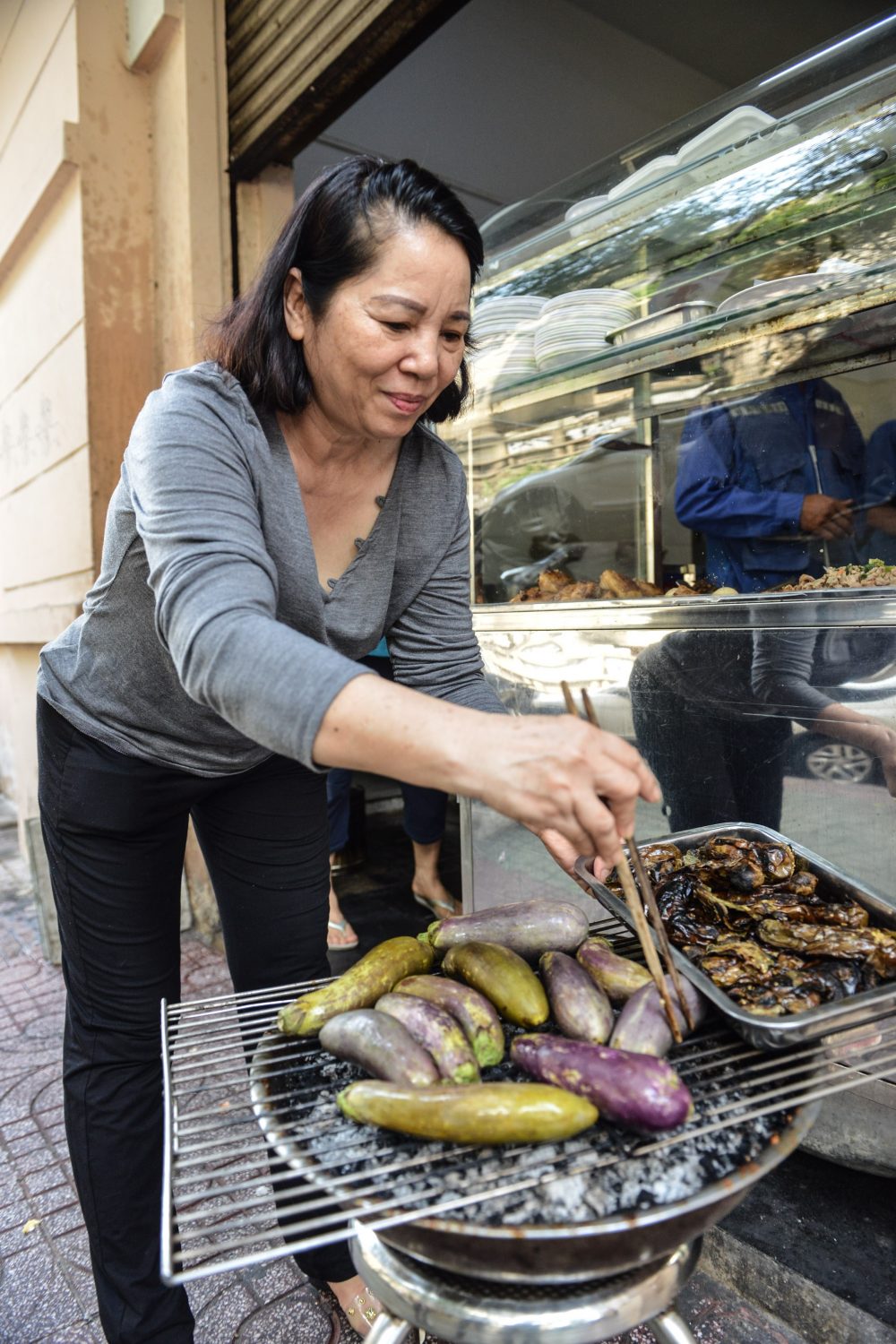
Deeply charred eggplant is balanced with bright, crunchy condiments.
In minutes, the pork is charred and the air is filled with meaty-lemony richness. We sit at a long table, where the skewers are served salad-like, balanced over rice noodles and dressed with the pickles, nước chấm, scallions, peanuts, fresh mint and torn lettuce. The result is, as with the eggplant, a hodgepodge of discordant flavors and textures that somehow harmonize.
In vietnam, grilling clearly is about far more than what happens on the grill. It’s about balancing the richness of the meat and heat with contrasting flavors and textures. And back at Milk Street, we worked hard to carry those lessons into our recipes. We started with the nước chấm and pickles, which paired well with both the pork and eggplant. We swapped the kohlrabi for easier-to-find daikon, which also gave the pickles a pleasant pungency.
For the eggplant, we preferred to leave the skin on for more texture and char. And chopped peanuts and fresh herbs in addition to the scallions provided the crunch and freshness we’d enjoyed in Ho Chi Minh City. For the pork, we stayed true to Nguyên’s recipe but found that boneless pork shoulder had a better texture and less fat than pork belly. We also simplified the serving by leaving out the noodles, focusing instead on the flavors of the toppings and marinade.
We went to Vietnam to learn about grilling. We didn’t realize the most important lesson would be about what happens off the grill.
More From Vietnam

